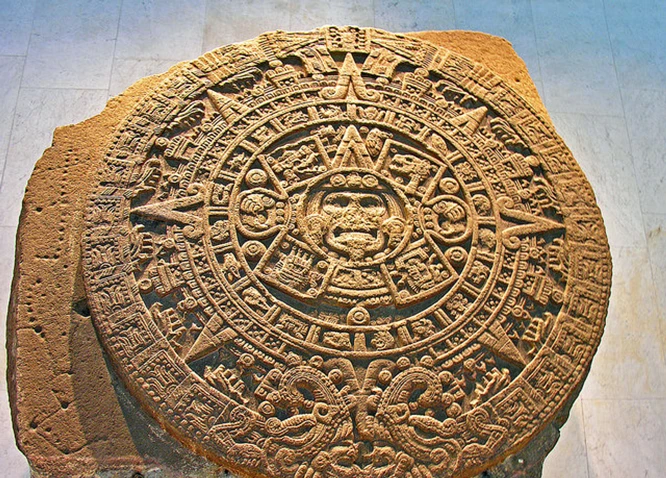The Aztec Calendar: Understanding its Significance and Interpretation
The Aztec calendar, also known as the Mexica calendar, is a remarkable accomplishment of ancient Mesoamerican civilization that has intrigued scholars and enthusiasts alike. Its intricate design and precise calculations reflect the advanced knowledge and understanding of the Aztec people. In this article, we will delve into the history, structure, and significance of the Aztec calendar, exploring its representation of time, religious importance, and astronomical associations. We will also explore the different ways in which the calendar can be interpreted, including the daysigns, year counts, and the 52-year cycle. We will address common misconceptions and discuss the legacy and modern influence of this ancient masterpiece. Join us on this journey of discovery as we unravel the mysteries of the Aztec calendar.
A Brief History of the Aztec Calendar
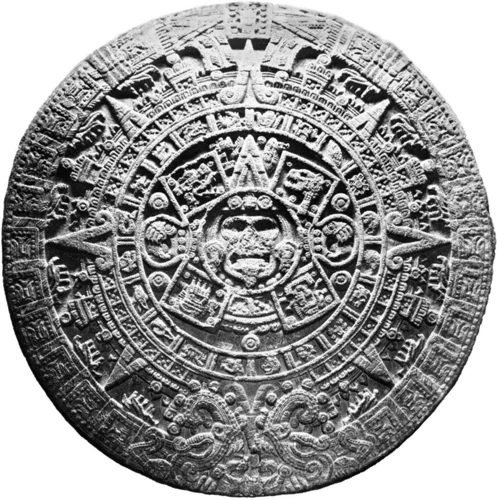
The Aztec calendar has a rich history that dates back to ancient Mesoamerica. Its origins can be traced to the earlier Olmec and Maya civilizations, who also had complex systems for measuring time. However, it was the Aztecs who further developed and refined the calendar to suit their own religious and cultural beliefs. The Aztecs believed that time was cyclical rather than linear, and they saw themselves as living in the era of the Fifth Sun, which they believed to be the current cycle of creation. The calendar served as a way to organize and mark important events and ceremonies in their society. It was not just a tool for tracking time but also deeply linked to their religious practices and mythological beliefs. The Aztecs incorporated their deities and celestial observations into the calendar, emphasizing the connection between the physical and spiritual realms. The calendar was used for determining auspicious dates for rituals, conducting agricultural activities, and predicting celestial events such as solar eclipses. Understanding the history of the Aztec calendar helps us appreciate the cultural and spiritual significance it held for the Aztec people. For more information on Aztec deities and the pantheon, refer to our article “Exploring the Aztec Pantheon: Deities, Beliefs, and Mythology”.
The Structure of the Aztec Calendar
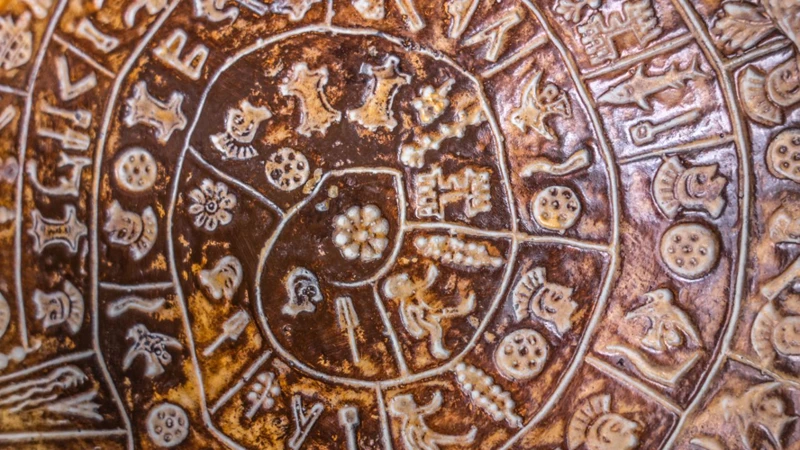
The structure of the Aztec calendar is a testament to the mathematical and astronomical prowess of the Aztec civilization. It consists of two interrelated calendars: the Tonalpohualli, which is a ritual calendar of 260 days, and the Xiuhpohualli, which is a solar calendar of 365 days. The Tonalpohualli is composed of 20 day signs, represented by unique glyphs, and 13 numbers. The combination of the day signs and numbers creates a cycle of 260 days, with each day having its own specific energy and significance. The Xiuhpohualli, on the other hand, is divided into 18 months of 20 days each, with an additional 5 “nameless” days known as the nemontemi. These 365 days correspond to the solar year and are essential for agricultural and seasonal observances. The two calendars work together in what is known as the Calendar Round, a cycle of 52 years. This cycle is considered significant as it combines the 260-day Tonalpohualli cycle with the 365-day Xiuhpohualli cycle. Each year within the Calendar Round is associated with a unique combination of a day sign and a number, creating a comprehensive system for tracking time and cycles. To explore the fascinating world of Aztec mythology and heroic legends, check out our article on “Epic Legends of Aztec Heroes and Their Deeds”. For a deeper understanding of the gods and goddesses within Aztec culture, visit our article “Gods and Goddesses of the Aztecs: An Overview of Their Roles and Powers”.
The Aztec Calendar and its Significance
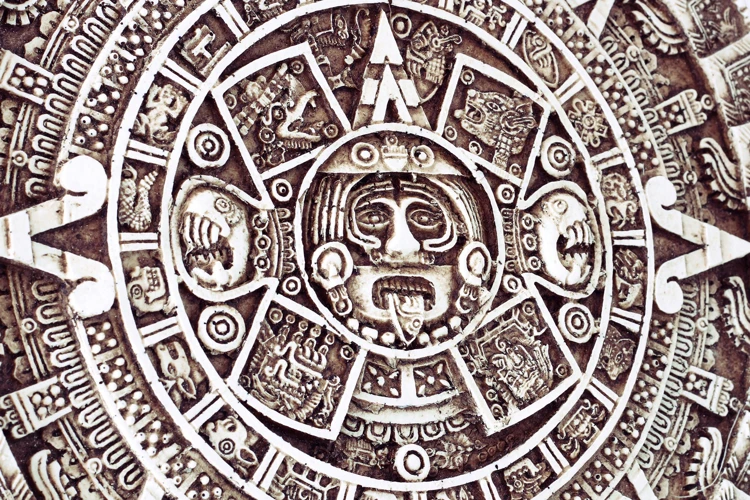
The Aztec calendar held immense significance in Aztec society, serving multiple purposes beyond timekeeping. Firstly, it represented the cyclical nature of time, reflecting the Aztec belief in the constant cycle of creation, destruction, and rebirth. The calendar was deeply intertwined with religious and ritualistic practices, as it guided the timing of ceremonies, festivals, and sacrifices. It played a crucial role in upholding the Aztec spiritual worldview and maintaining a harmonious relationship with the gods. Secondly, the calendar had astronomical significance, as it aligned with celestial events such as equinoxes and solstices, allowing the Aztecs to track the movements of celestial bodies. This helped them determine the optimal timing for agricultural activities and navigate the agricultural cycle. Lastly, the calendar symbolized the Aztec worldview and their connection to the natural world, incorporating mythological and symbolic associations that spoke to the deeper cosmic order. The intricate design and precise calculations of the Aztec calendar showcase the intellectual and mathematical prowess of the Aztec civilization, making it a testament to their cultural and scientific achievements.
1. Representation of Time
The Aztec calendar provides a sophisticated representation of time that reflects the complex worldview of the Aztec people. It consists of two interconnecting calendars: the Tonalpohualli and the Xiuhpohualli. The Tonalpohualli, also known as the sacred calendar or the day-count, is composed of 260 days. It is based on a combination of 20 day signs, represented by various symbols such as Jaguar, Rain, or Rabbit, and 13 numerals. The combination of these signs and numerals creates a unique day in the calendar cycle. The Tonalpohualli was believed to govern the spiritual aspects of life and was closely linked to the gods and cosmic forces. On the other hand, the Xiuhpohualli, also known as the solar calendar or the year-count, is a 365-day calendar divided into 18 months, with each month containing 20 days. The remaining five days were considered ominous and were associated with the deities who destroyed the previous world. The Xiuhpohualli tracked agricultural and seasonal cycles, providing practical guidance for farming and religious ceremonies. The combination of these two calendars created a complex system that allowed the Aztecs to track time not only on a daily and yearly basis but also on a grand cosmic scale.
2. Religious and Ritualistic Importance
The Aztec calendar held immense religious and ritualistic importance within their society. It was considered a sacred tool that connected the physical world with the spiritual realm. The calendar was closely associated with the Aztec pantheon of gods and goddesses, representing their various roles, powers, and mythological significance. Each day, month, and year was assigned a specific deity, and rituals were performed to honor and appease these divine beings. The Aztecs believed that by following the calendar and conducting the prescribed ceremonies, they could maintain a harmonious relationship with the gods and ensure the well-being of their community. Ceremonies and festivals were organized throughout the year to honor specific deities and celebrate important cosmic events. The calendar also played a key role in the selection of sacrificial victims, with specific days deemed more favorable for such rituals. The religious and ritualistic importance of the Aztec calendar underscored the deeply spiritual nature of Aztec society and its reliance on divine guidance and intervention. For a comprehensive understanding of the Aztec deities and their roles, you can refer to our article “Gods and Goddesses of the Aztecs: An Overview of Their Roles and Powers”.
3. Astronomical Significance
The Aztec calendar holds significant astronomical importance due to its alignment with celestial events. The Aztecs were astute observers of the sky and incorporated their astronomical knowledge into the calendar system. One notable astronomical alignment is the synchronization of the calendar with the solar year. The Aztec calendar consisted of two main cycles: the Tonalpohualli, a 260-day sacred calendar, and the Xiuhpohualli, a 365-day solar calendar. By combining these two cycles, the Aztecs created a calendar round that repeated every 52 years. This synchronization allowed them to accurately predict the occurrence of equinoxes, solstices, and other celestial events. Additionally, the calendar played a critical role in determining the dates for religious festivals and rituals associated with specific celestial occurrences. For instance, the ceremony of the New Fire, known as the “Binding of the Years,” was performed every 52 years to renew the cosmic order. The Aztec understanding of astronomical phenomena not only demonstrates their scientific knowledge but also reflects their belief in the interconnectedness of the celestial and earthly realms. This cosmic perspective elevated their rituals and ceremonies, reinforcing their spiritual connection with the universe.
Interpreting the Aztec Calendar
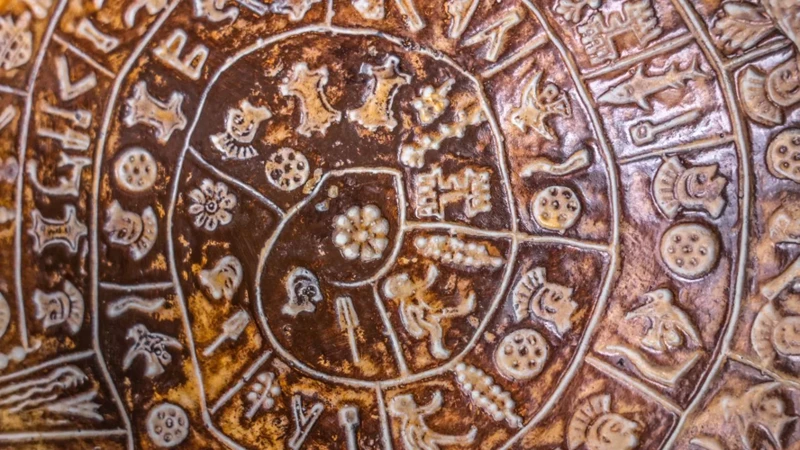
Interpreting the Aztec Calendar involves unraveling its complex systems and understanding its various components. One key aspect is the Tonalpohualli, a 260-day ritual calendar that represents the spiritual and divinatory aspect of time. It consists of 20 day signs and 13 numbers, creating a unique combination for each day. These combinations were believed to have specific characteristics and influences on individuals born on those days. Another crucial element is the Xiuhpohualli, a 365-day solar calendar that tracks agricultural and seasonal cycles. It was divided into 18 “months” of 20 days each, with 5 extra “unlucky” days at the end. The combination of the Tonalpohualli and the Xiuhpohualli created the Calendar Round, a 52-year cycle that represented the complete cycle of the cosmos. Understanding the mythological and symbolic associations within the calendar is also crucial, as it incorporates stories and deities from Aztec mythology. It is important to approach the interpretation of the Aztec calendar with respect and knowledge of the cultural context it was embedded in.
1. The Tonalpohualli and the Daysigns
The Tonalpohualli, also known as the “Count of Days,” is one of the main components of the Aztec calendar system. It is comprised of 260 days and is a cycle that repeats continuously. The Tonalpohualli is formed by combining a series of 20 day signs or “daysigns” with 13 numbers, creating a unique combination for each day in the cycle. This resulted in a total of 260 unique daysign-number combinations.
Each daysign in the Tonalpohualli had its own symbolic meaning and was associated with certain characteristics and energies. Some of the daysigns include Ocelotl (Jaguar), Calli (House), Xochitl (Flower), and Atl (Water). These daysigns were believed to influence human destiny and personality traits. For example, those born under the Jaguar daysign were seen as strong and powerful individuals, while those born under the Flower daysign were seen as sensitive and artistic.
The Tonalpohualli played a significant role in Aztec religious and daily life. It was consulted for important events such as births, marriages, and rituals. The Aztecs believed that each person had a specific destiny determined by their day of birth in the Tonalpohualli. They would consult the calendar to understand their future and make decisions accordingly.
To keep track of the Tonalpohualli, the Aztecs used a combination of day signs and day numbers. The daysign and number would alternate, combining to create a new day name every day. This created a complex and intricate system by which each day had its own unique designation. The Tonalpohualli was vital in the interpretation of the Aztec calendar and played a significant role in the religious and spiritual practices of the Aztec civilization.
2. The Xiuhpohualli and the Year Counts
The Xiuhpohualli is an essential component of the Aztec calendar system, representing the agricultural year and the cycles of nature. It consisted of 18 months, each lasting 20 days, resulting in a total of 360 days. The remaining five days were considered to be an unlucky time period known as the “Nemontemi,” during which various ceremonies and rituals were performed to ward off evil and misfortune. The Xiuhpohualli was primarily used for agricultural purposes, guiding the Aztecs in determining the most suitable times for planting, harvesting, and other activities related to farming. It played a crucial role in ensuring the prosperity and sustenance of their civilization. The Year Counts, or “xiuhmolpilli,” were also an integral part of the Xiuhpohualli. They represented cycles of 52 years, which held great significance in Aztec culture. Each year in the cycle was associated with a specific name and linked to a unique combination of deities, celestial events, and symbols. These Year Counts were crucial for predicting and interpreting future events, as well as for determining astrological and ritualistic practices across the Aztec empire. Understanding the Xiuhpohualli and Year Counts provides us with valuable insights into the agricultural traditions and predictive abilities of the Aztec civilization, showcasing the interplay between their deep connection to nature and intricate calendrical systems. For more information on Aztec gods and goddesses, refer to our article “The Gods and Goddesses of the Aztecs: An Overview of their Roles and Powers”.
3. The Calendar Round and the 52-Year Cycle
The Calendar Round and the 52-Year Cycle
One of the most interesting aspects of the Aztec calendar is the concept of the Calendar Round and the 52-year cycle. The Calendar Round is a combination of two calendars: the Tonalpohualli, which is the sacred calendar of 260 days, and the Xiuhpohualli, which is the solar calendar of 365 days. The Tonalpohualli consists of 20 named days (known as the “daysigns”) combined with numbers ranging from 1 to 13, creating a cycle of 260 unique day combinations. The Xiuhpohualli, on the other hand, follows a cycle of 18 months, with each month consisting of 20 days. At the end of the 18 months, there are an additional five “nameless days” to complete the solar year.
The Calendar Round occurs when the Tonalpohualli and Xiuhpohualli align at the same starting point. This alignment takes place once every 52 years, marking a significant event known as a New Fire Ceremony. During this ceremony, fires were extinguished across the Aztec empire, and a new fire was kindled to symbolize the renewal of time and the cosmic order. The 52-year cycle held great importance for the Aztecs, as it represented a complete cycle of creation and destruction. The alignment of the two calendars was seen as a time of purification and the opportunity for individuals to make amends for past transgressions.
To keep track of the 52-year cycle, the Aztecs utilized a system of “Year Counts.” Each year within the cycle was assigned a name and a number, creating a sequence of 52 unique combinations. These Year Counts were significant in various aspects of Aztec life, such as documenting historical events, tracking agricultural cycles, and predicting celestial phenomena.
Understanding the Calendar Round and the 52-year cycle provides insight into the meticulous planning and spiritual reverence the Aztecs had for time. The intricate convergence of the Tonalpohualli and Xiuhpohualli, along with the accompanying ceremonies, highlight the Aztec belief in the cyclical nature of time and the perpetual renewal of the cosmos.
4. Mythological and Symbolic Associations
Mythological and Symbolic Associations
The Aztec calendar holds a wealth of mythological and symbolic associations that provide deeper insight into its significance and meaning. Many of these associations are rooted in the complex mythological beliefs of the Aztec civilization. One prominent association is the connection between the calendar and the various gods and goddesses in the Aztec pantheon. Each day sign in the Tonalpohualli, the sacred calendar of 260 days, is associated with a specific deity. These deities represent different aspects of life, such as fertility, war, agriculture, and the natural elements. The gods and goddesses were believed to influence the events and energies of each day, and their presence in the calendar reflects the Aztec’s devotion and reverence towards them.
Additionally, the Aztec calendar is filled with symbolic representations that carry profound meaning. For example, the intricate patterns and glyphs found on the calendar stones and codices depict celestial bodies, natural elements, and mythological creatures. These symbols serve as a visual language that communicates important concepts and beliefs. The use of symbols also reinforces the connection between the physical and supernatural realms. The calendar’s cyclic nature further symbolizes the continuous flow of time and the never-ending cycle of life and death. This symbolism reflects the Aztec view of the universe as a dynamic and interconnected system.
The Aztec calendar is associated with cosmic and natural phenomena. The alignment of celestial events such as solstices, equinoxes, and other astronomical occurrences were incorporated into the calendar. These events were seen as celestial influences on earthly events and were considered significant for agricultural practices, religious ceremonies, and even predicting future events. The synchronization of celestial and earthly cycles in the calendar reinforced the belief in the interconnectedness of the universe and the divine powers that governed it.
The mythological and symbolic associations of the Aztec calendar provide a deeper understanding of its significance within the Aztec civilization. It served not only as a practical tool for tracking time but also as a reflection of their religious beliefs, cultural identity, and cosmic worldview. The presence of deities, symbolic representations, and celestial alignments within the calendar highlights the complex and deeply spiritual nature of the Aztec civilization.
Misconceptions and Common Misinterpretations

Misconceptions and Common Misinterpretations
The Aztec calendar, with its intricate design and mystique, has been the subject of various misconceptions and misinterpretations over time. One common misconception is that the calendar predicts the end of the world. While the Aztecs believed in the cyclical nature of time, there is no evidence to suggest that the calendar predicts an apocalyptic event. Another misconception is that the calendar’s 260-day cycle was solely used for divination. While divination was indeed an important aspect of Aztec culture, the Tonalpohualli, the 260-day cycle, served multiple functions, including tracking time, religious ceremonies, and agricultural activities.
It is important to clarify that the Aztec calendar is not exclusively an Aztec creation. It was influenced by earlier civilizations such as the Olmec and Maya, who also had complex calendar systems. Additionally, the Aztec calendar is not a singular, monolithic creation but rather a combination of various cycles, such as the Tonalpohualli and the Xiuhpohualli, which interconnect to form a more comprehensive calendar system.
Another common misinterpretation is the belief that the Aztec calendar is solely based on astronomical observations. While celestial observations did play a significant role in the calendar’s development, it is essential to understand that the Aztecs perceived time as a multidimensional concept, encompassing both celestial and mythological aspects. The calendar was deeply intertwined with their religious beliefs and mythological narratives, representing a rich tapestry of symbolism and symbolism that went beyond astronomical calculations.
It is also worth noting that many Aztec codices, which were important sources of information about the calendar, were destroyed during the Spanish conquest. As a result, some aspects of the calendar’s interpretation and symbolism remain subject to ongoing research and debate among scholars.
The Aztec calendar has often been misunderstood and misinterpreted. It is important to approach its study with an open mind and a willingness to explore the complexities and cultural context surrounding it. By dispelling misconceptions and embracing a holistic understanding, we can gain a deeper appreciation for the significance and intricate nature of the Aztec calendar.
Legacy and Modern Influence of the Aztec Calendar
Legacy and Modern Influence of the Aztec Calendar
The Aztec calendar continues to have a lasting impact on our world today. Despite the downfall of the Aztec Empire, its cultural and artistic legacy has endured through the centuries. The precise astronomical knowledge embedded in the calendar has fascinated astronomers and scholars, leading to further studies and interpretations. Additionally, the intricate artwork and symbolism of the calendar have influenced modern art, design, and fashion. Its unique visual representation has been incorporated into various mediums, including paintings, sculptures, and jewelry, showcasing the enduring appeal of Aztec culture.
The Aztec calendar has become a symbol of Mexican identity and pride. It is recognized as a national symbol of Mexico and is often featured in celebrations, festivals, and cultural events. The calendar’s iconic imagery can be seen on public buildings, monuments, and even on the Mexican flag. It serves as a reminder of Mexico’s rich indigenous heritage and the contributions of the ancient civilizations that once thrived on its soil.
The Aztec calendar continues to hold significance in spiritual and esoteric communities. Many people today study and practice the ancient Aztec calendar system, exploring its connections to astrology, energy work, and personal growth. The calendar’s emphasis on cycles, balance, and the interconnectedness of all things resonates with individuals seeking a deeper understanding of themselves and their place in the world.
The Aztec calendar has left an indelible mark on our society. Its historical importance, artistic beauty, and profound symbolism have ensured its enduring legacy. Whether it is through academic research, artistic inspiration, or cultural celebrations, the Aztec calendar continues to captivate and inspire people today, connecting us to the ancient wisdom and spiritual beliefs of the Aztec civilization.
Conclusion
In conclusion, the Aztec calendar stands as a testament to the advanced knowledge and sophisticated civilization of the Aztec people. Its intricate design and precise calculations demonstrate their deep understanding of time, astronomy, and religious beliefs. The calendar served as a tool for organizing their society, marking important events, and connecting with the spiritual realm. Through the Tonalpohualli, Xiuhpohualli, and the Calendar Round, the Aztecs embraced a cyclical view of time, seeing themselves as part of a continuous cosmic cycle. Despite the misunderstandings and misinterpretations that have occurred over the centuries, the Aztec calendar continues to captivate us with its complexity and mystique. Its legacy extends beyond ancient times, as it influences contemporary art, design, and cultural practices. The Aztec calendar stands as a testament to the brilliance and ingenuity of the Aztec civilization, reminding us of the rich and multifaceted nature of human history.
Frequently Asked Questions
1. How did the Aztecs measure time?
The Aztecs used a complex calendar system that consisted of two main calendars: the Tonalpohualli and the Xiuhpohualli. The Tonalpohualli was a 260-day ritual calendar based on a combination of 20 day signs and 13 numerical coefficients. The Xiuhpohualli, on the other hand, was a 365-day solar calendar that accounted for the Earth’s orbit around the sun.
2. Was the Aztec calendar similar to the Gregorian calendar we use today?
No, the Aztec calendar and the Gregorian calendar are fundamentally different. The Gregorian calendar is a solar-based calendar that follows a 365-day year with occasional leap years, while the Aztec calendar combines both solar and ritualistic elements and is organized in cycles.
3. What was the purpose of the Aztec calendar?
The Aztec calendar served multiple purposes. It was used to track time, schedule religious ceremonies and rituals, plan agricultural activities, and observe celestial events. It was also seen as a way to connect the spiritual and physical realms.
4. How accurate was the Aztec calendar?
The Aztec calendar was impressively accurate given the resources available at the time. The 365-day solar calendar had a variation of only 0.006 days per year, which is remarkably close to the actual length of a tropical year.
5. Did the Aztecs believe in the concept of time cycles?
Yes, the Aztecs viewed time as cyclical rather than linear. They believed that the world had gone through four previous creations, or “Suns,” each ending in destruction. The current era, known as the Fifth Sun, was believed to be in progress during the time of the Aztecs.
6. Were there any prophecies or predictions associated with the Aztec calendar?
Yes, the Aztec calendar was believed to provide insight into future events and served as a tool for prophecy. Priests and shamans would consult the calendar to determine auspicious dates for important events and ceremonies and to predict celestial events such as eclipses.
7. What role did astrology play in the Aztec calendar?
Astrology played a significant role in the Aztec calendar. The positions of celestial bodies, such as the sun, moon, and planets, were carefully observed and incorporated into the calendar’s calculations. These observations helped determine the dates for religious festivals and agricultural activities.
8. Did the Aztec calendar have any mythological associations?
Yes, the Aztec calendar was deeply intertwined with Aztec mythology. Many of the day signs and numerical coefficients in the Tonalpohualli were associated with specific deities and had symbolic meanings. The calendar was seen as a way to honor and connect with these mythological forces.
9. Were there any reforms or changes made to the Aztec calendar over time?
While the Aztec calendar was based on earlier Mesoamerican calendar systems, the Aztecs made some modifications and refinements to suit their own cultural and religious practices. However, the overall structure and principles remained consistent throughout their civilization.
10. How has the Aztec calendar influenced modern-day culture?
The Aztec calendar continues to captivate and inspire people today. Its intricate design and cultural significance have been incorporated into various forms of art, jewelry, and tattoos. The calendar’s symbolism and mythology also continue to be studied and appreciated by scholars and enthusiasts interested in Mesoamerican history and culture.

